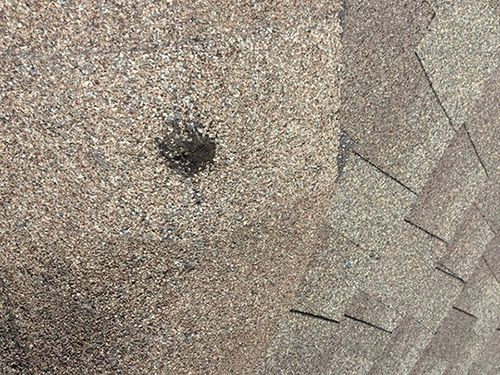Performing regular maintenance and inspections on your property can help you identify a damaged roof. Roofs can become damaged for many reasons, the leading cause of due to storm damage; hail, high winds, snow, and ice can all cause major damage to your roof. If you suspect your property may have a damaged roof, Call Alpine Roofing Construction to schedule a roofing inspection. Regular inspections and maintenance can save your property from receiving greater damage from water intrusion.

Perform an Outdoor Inspection:
A visual inspection of your roof can help you spot missing and damaged shingles (damaged shingles might be curled, cracked, or torn). If this type of damage is localized (i.e., it covers less than 30 percent of the entire roof), roofing repairs might be able to address the problem. More extensive damage might necessitate roof replacement. Also keep in mind that not only the roof itself, but the chimney, ventilation pipes, roof flashing, gutters and fencing can also become damaged. Be sure to inspect them for damage as well. If you suspect that your property has a damaged roof, here is a basic list of what to look for:
- Composition shingles: curling, loss of granulation, broken, damaged or missing shingles
- Wood shingles/shakes: Mold or decay, splitting or curling
- Flat roof: Obvious patches, cracks or tears, several blisters and/or wrinkles (also check patched areas from inside the attic)
- Flashing: Tears, buckling around roof penetrations
- Roofing cement: Excess cement, crumbling
- Soffits and fascia: Decay, stains
- Soffit and ridge vents: Clogged or damaged vents, flashing and shingles around them curling or missing
- Gutters: Decay or rust, leaky seams, loosely attached to structure, bent or sagging, missing sections of gutter or downspout, filled with debris. Clogged gutters can easily freeze shut and cause excessive weight on gutter fasteners, ice dam conditions, and slippery walks below.
- Chimneys: Leaning, loose or missing flashing, damaged bricks, cap or cracked joints. Chimney flashing is especially prone to tearing because a chimney settles independently from the house.
Perform an Indoor Inspection:
Moisture marks, brown, yellow, or grey stains, and peeling paint on walls and/or ceilings could all indicate a damaged, leaking roof. Also take a peek in your attic, where damp rafters or leaks could additionally point to roof damage. And if you experience a sudden surge in energy costs, it could be a sign that your roof ventilation has been compromised.
Do not delay in fixing your damaged roof. Delays can cause the damage to worsen and spread to other areas of your property.
